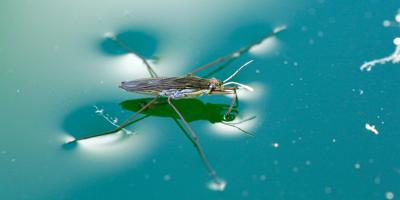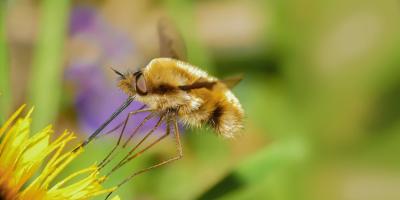Analyzing Ants -- What’s with the Wings?

It’s a bird, it’s a plane, it’s an… ant?
Although not quite faster than a speeding bullet, nor more powerful than a locomotive, don’t be surprised if one day you encounter an insect you’d normally expect to see on the ground soar by. Though typically seen crawling around, believe it or not -- some ants actually grow wings and fly.
Why Some Ants Have Wings
At least some members of all species of ants have the genetics to develop wings. You’re more likely to see higher numbers of such airborne ants during certain times of the year—specifically early- to mid-spring—when those ants tasked with reproduction take to the skies in search of mates.
Soaring According to Social Order
Ant colonies operate on a strict caste system. Some ants are born workers and will die workers, tasked to build mounds their whole lives. Others are scouts—they’re the ones carting crumbs and other yummies back to the colony to feed the other ants.
Then, of course, there are the ants born of royal blood: the alates.
Ants with wings are the lucky ones, so to speak. It’s the winged males’ job to venture forth and mate with the winged females, thus perpetuating the species. Virgin queens also sprout wings, but lose them upon their “coronation,” when they officially start their own colony.
Reproductive males however, don’t share such a glorious fate. They die soon after their work is finished.
Unfertilized ant eggs eventually develop into winged males, whereas fertilized eggs will become females. Queens are ultimately responsible for determining whether her offspring develop wings or not, as she secretes a chemical that stops wing and ovum growth on the fertilized female eggs, thus producing an army of workers and scouts.
The fortunate eggs that will pass through the larva, pupa and adult stages of development with the ability to fly go onto become queens themselves, which has benefits far beyond just ruling their own ant kingdom. The oldest-living ant in captivity was a queen who persisted to live a life of an astonishing 28 ¾ years.
As small, land-based insects, ants’ ability to travel is quite limited. Wings are an evolutionary adaptation that allows them to spread out over far greater distances than if they had to march their way around the world. That is part of why ants can become such persistent pests.
Alleviating Any Ant Problem
Ridding your home or business of ants -- winged or not -- often requires a pest control professional, one that is is specially trained and licensed to combat the pests while keeping your family safe.
At JP Pest Services, one of our favorite tools for eliminating ant populations inside your home or business are ant bait stations. Bait stations trick ants into thinking they’ve found food, when really what you’re sending them home with is poison for their colony, including their queen. However, as deadly as it is to ants, it provides no threat to you nor your pets. It is also colorless, odorless, and is discreetly placed in areas out of sight and reach.
Other important preventative measures include regular cleaning, especially around areas where food is consumed. What’s tasty to you is just as appealing to ants, and even a small pile of crumbs can attract a massive onslaught of scout ants with hundreds and possibly thousands of hungry brothers and sisters to feed at home.
Did ants decide to colonize your home or business? Leave it to the pros to get them out and request a free quote today.



